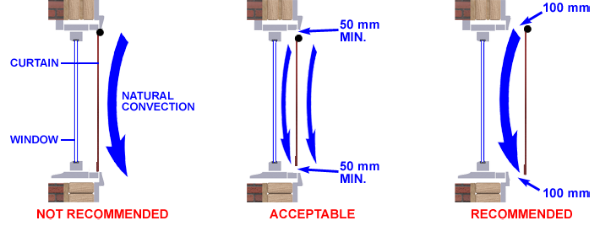Proper Installation
Professionally installed window, such as windows installed by a certified Window Wise™ contractor, will significantly help reduce the potential for condensation. Windows should be installed as close as possible to the interior finish. The space between the frame and the rough opening around the perimeter of the window should be completely insulated. And the joint between the window frame and the wall surface on both the interior and exterior sides of the window should be sealed.
Placement of Interior Curtains, Blinds and Valances
Interior window accessories must not inhibit or impede the free circulation of air at the surface of the window. Any restriction of movement will result in “still” air which will cool. This cooler air will lower the condensation resistance of the window and increase the likelihood of “sweating”.

Heat Sources
Most houses are designed and built with the heat ventilation sources at the outer perimeter and often under windows. This ensures that the air temperature will be higher in the vicinity of the windows with the desired effect of increasing condensation resistance. Care should be taken not to block the unrestricted movement of the warm air with furniture or other accessories. Doing so could increase the potential for condensation.
Stack Effect and Wind Exposure
Condensation is often worse on the second floor because of stack effect and wind exposure. Stack effect refers to the fact that warm air rises and therefore the warmer more moist air will be on the second story. Wind exposure means that the upper floor is more exposed to higher wind speeds, causing lower glazing surface temperatures. These two factors lead to more condensation on the upper windows in a house.
